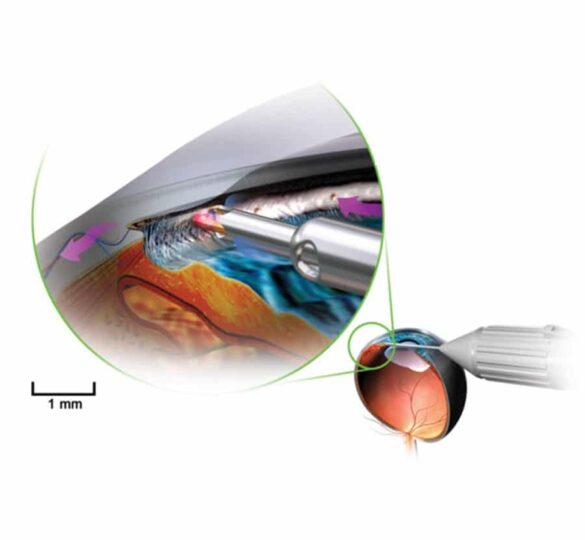Trabectome Surgery: A Minimally-Invasive Glaucoma Procedure
Trabectome surgery is a minimally-invasive glaucoma surgery that has been available since 2005 to lower eye pressure. It is usually effective, has a good safety profile, and is usually combined with cataract removal to lower eye pressure.

Surgically Lowering Eye Pressure in Glaucoma
If you have been diagnosed with glaucoma and have a cataract, you might benefit from Trabectome, a minimally-invasive glaucoma procedure that increases flow into the natural drainage system of your eye.
Most forms of glaucoma can be treated with this intervention: open-angle glaucoma and angle-closure glaucoma, as well as controlled uveitic glaucoma.
Trabectome surgery can be performed as a single surgery without cataract removal in the same session, but it is more often combined.
There are two common scenarios:
- You primarily have glaucoma that is not sufficiently controlled with eye drops or laser; you also have a cataract (blurry vision, glare)
- You primarily have a symptomatic cataract that is producing glare or blurry vision and would like to reduce eye drops for your glaucoma
What is Trabectome?
Trabectome surgery increases the amount of fluid exiting the eye. The tip of the Trabectome removes the strainer-like tissue (trabecular meshwork) that reduces flow into the natural drainage system. This is done through the same small corneal incision as cataract surgery.
Can I go home the day of surgery?
Yes, Trabectome is an outpatient surgery that normally takes 5 to 15 minutes. Numbing drops or injectable anesthetic and IV sedation are used for comfort. You will go home the same day of surgery, and be seen the next day in the eye clinic to check for any inflammation and or infection. You must have someone with you to drive you home as you are not allowed to use any transportation on your own because the medication can cause drowsiness.
How successful is the Trabectome?
Studies indicate that Trabectome usually lowers the eye pressure by about 30%, while also decreasing the number of glaucoma eye drops that need to be taken. Trabectome has not been compared in a formal randomized controlled trial to conventional glaucoma surgery. Several Trabectome studies found success rates similar to conventional filtering surgery through one year post-op, but long-term success data is not yet available.
What if the pressure is not low enough after Trabectome?
Because Trabectome surgery does not always work, glaucoma medications or additional glaucoma surgery may be needed. Fortunately, Trabectome surgery does not affect the success of subsequent conventional glaucoma surgeries if needed.
When will I be able to resume normal activities?
As with almost any eye surgery, heavy lifting and other strenuous activities should be avoided for at least one week. Although some patients enjoy clear vision the next day, the visual recovery in many cases is not as rapid as following cataract surgery, and may take several days to improve. The vision can vary between good and bad for several days and may affect your ability to drive or handle equipment during this time.
Do I have to continue my glaucoma eye drops?
Your glaucoma drops are usually stopped after the surgery and then gradually added months later if needed. Three different eye drops are most important during the 2 months after surgery: an antibiotic, steroids, and Pilocarpine.
Article by Nils Loewen, MD, PhD. This article was edited by Glaucoma Research Foundation’s Gleams Editorial Board for the website www.stg-glaucomaresearchfoundation-stg.kinsta.cloud. Last reviewed on April 6, 2022.

Nils Loewen, MD, PhD
Nils Loewen, MD, PhD is an Associate Professor of Ophthalmology and Director of the Glaucoma Service at the University of Pittsburgh School of Medici